BM Sharma Solutions for Chapter: Newton's Laws of Motion I, Exercise 2: DPP
BM Sharma Physics Solutions for Exercise - BM Sharma Solutions for Chapter: Newton's Laws of Motion I, Exercise 2: DPP
Attempt the free practice questions on Chapter 6: Newton's Laws of Motion I, Exercise 2: DPP with hints and solutions to strengthen your understanding. Chapterwise/Topicwise Daily Practice Problems (DPP) Mechanics I JEE Main & Advanced solutions are prepared by Experienced Embibe Experts.
Questions from BM Sharma Solutions for Chapter: Newton's Laws of Motion I, Exercise 2: DPP with Hints & Solutions
Three forces start acting simultaneously on a particle moving with velocity . These forces are represented in magnitude and direction by the three sides of triangle (as shown). The particle will now move with velocity
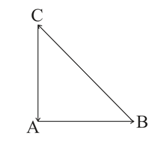
A helicopter is moving to the right at a constant horizontal velocity. It experiences three forces , and the force on it caused by rotor . Which of the following diagrams can be the correct free body diagram, representing the forces on the helicopter?

As shown to the right, two blocks with masses and are pushed by force in both case , and case . The surface on which the blocks lie is horizontal and frictionless. Let be the force that exerts on in case and be the force that exerts on in the case . Which of the following statements is true?
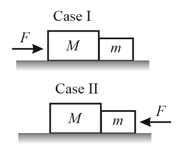
Consider the three cases, as shown in the figure. Assume the friction to be absent everywhere, the pulleys to be light and the string connecting the blocks to other block or fixed vertical wall to be light and inextensible. Let and be the tension in the strings, as shown in figure , figure and figure , respectively. Then, pick the correct comparison between the given tensions (for the instant shown) from the options below.
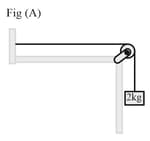
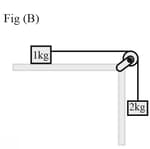
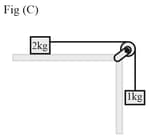
Consider the system, as shown in the figure. The pulley and the string are light, and all the surfaces are frictionless. The tension in the string is
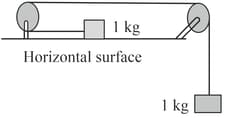
As shown in the following mass pulley system, pulleys and strings are massless. One end of the string is pulled by force . The acceleration of the block will be
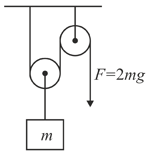
In the figure shown, a balloon is pressed against a wall. It is in equilibrium and maximum compressed state.

force of the balloon on the hand of the man, force of the balloon on the wall, Friction and weight of the balloon.
Which of the following statements are correct?
Consider a cart being pulled by a horse with a constant velocity. The horse exerts a force on the cart. (The subscript indicates the force on the cart due to the horse). The first subscript denotes the body on which force acts and the second due to which it acts.
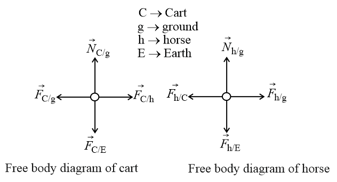
Choose the correct statement(s).
